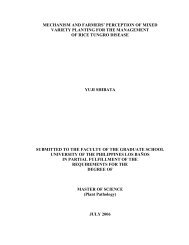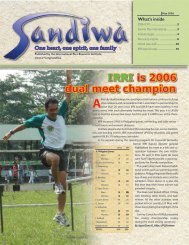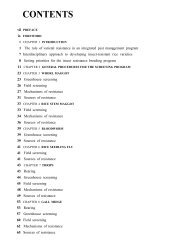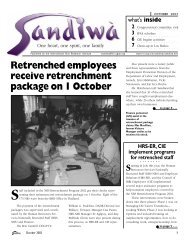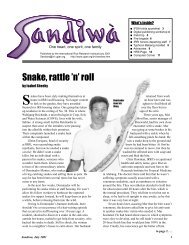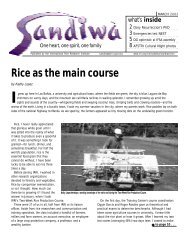Untitled - International Rice Research Institute
Untitled - International Rice Research Institute
Untitled - International Rice Research Institute
You also want an ePaper? Increase the reach of your titles
YUMPU automatically turns print PDFs into web optimized ePapers that Google loves.
a<br />
b<br />
→<br />
→<br />
→<br />
f<br />
e<br />
f<br />
c<br />
d<br />
Fig. 57. Habit character of Pinatubo oryzae Manandhar and Mew on (a) whole seed (12X), (b) sterile lemmas (50X),<br />
and (c) awn portion (50X). Photomicrograph of P. oryzae showing (d) mycelia, (e) conidiophore, and (f) conidia at<br />
40X and stained with lactophenol blue.<br />
Observed frequency (%)<br />
60<br />
50<br />
40<br />
30<br />
20<br />
10<br />
0<br />
Sterile<br />
lemmas<br />
Awn<br />
Partition<br />
bet. lemma<br />
and palea<br />
Entire<br />
seed<br />
Lemma/<br />
palea<br />
only or<br />
both<br />
Seed part<br />
Fig. 58. Observed frequency of Pinatubo oryzae<br />
occurrence on the seed.<br />
Fig. 59. Plate cultures of Pinatubo oryzae Manandhar<br />
and Mew showing colony growths on PDA, PSA, and<br />
MEA incubated at ART, 21 °C, and 28 °C at 15 d after<br />
inoculation.<br />
52



